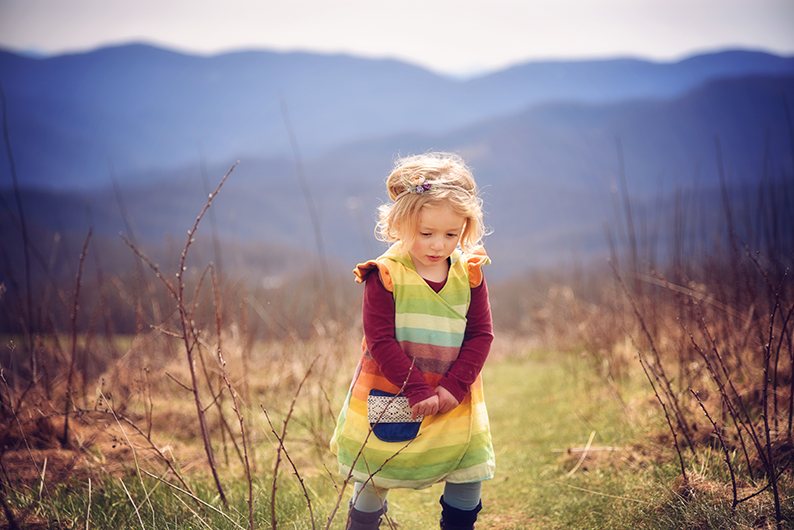When sewing an unlined garment, finishing the seam allowances is an important step in the process. Finishing the seams will prevent the raw fabric edges from fraying or unraveling, and will result in a much neater finish. Sewing and wearing a garment that is beautiful on the outside and the inside can be very satisfying!
There are many different methods for finishing seams - some are quick and simple, while others are more involved. Here's an overview of some common methods, and a description of when you may want to use them.

Zigzag stitch

Using a zigzag stitch is a simple way to finish seam allowances. Most basic home sewing machines have an adjustable zigzag stitch. Zigzag stitching is a simple, versatile seam finishing method that works on a variety of fabric weights.
Experiment with stitch length and width on a piece of scrap fabric to figure out what combination works best for the weight of fabric you are using. When finishing a 3/8" (1cm) seam allowance, a width of 3mm and stitch length of 2mm are a good place to start. A very wide stitch can cause the fabric to pucker, especially when stitching a single layer of fabric.
You can zigzag the seam allowances together and press to one side, or you may wish to finish the seams separately and press the seam open for less bulk.
Overlocker/Serger

Using an overlocker/serger is a quick way to finish seams that yields a neat, professional-looking result.
Most home overlockers sew both 3 and 4 thread seams, so it's a good idea to experiment and see what works best. For example, when finishing a lighter weight fabric, you may want to use a narrow 3 thread stitch. Some 4 thread stitches sew a seam and finish the edge of the fabric, though when sewing a garment, my preference is to sew the seams with my sewing machine for greater precision, then finish the seam allowances with the overlocker.
Seam allowances can be overlocked/serged together and pressed to one side, or separately so that the seam can be pressed open.
Tip - if you know what seams will need to be finished before you start sewing your project, you can actually do your overlocking *before* sewing - this way, it can be easier to work on flat pieces of fabric, rather than negotiating seams.
Pinking shears

Trimming seam allowances using pinking shears is a simple, low-tech way to minimise seam fraying. Though not the most durable choice, they can work in a pinch! Pinking shears are best used for fabric that is more stable and less prone to fraying.
French seams

French seams produce a beautiful, neat finish that fully encloses the raw edge of the seam. Since they are sewn twice (once with the fabric wrong sides together, then flipped and sewn again to enclose the seam), they are quite durable.
French seams are perfect for lightweight fabric - even sheer fabrics - since they produce a neat, delicate seam. Avoid heavier fabrics, since the seams can get bulky.
Read more about sewing French seams here. The Breeze Shirt pattern includes instructions for sewing French seams too!
Flat felled seams

Flat felled seams are another method for creating a beautiful, enclosed seam with no raw edges. The seam allowance wraps around itself, and is stitched in place to one side of the seam, resulting in a visible line of stitching on the right side of the garment. Jeans are often sewed with flat felled seams, though using a slightly different method where the seam allowance and two lines of stitching are on the outside of the garment. The method we use finishes the seam on the inside of the garment instead.
Use felled seams to create a neat finish for an unlined garment, or to create durable seams for shorts and trousers.
Learn how to sew flat felled seams two ways - with a machine, or by hand - here.
Bound Hong Kong Seams

Bound Hong Kong seams are another beautiful way to finish an unlined garment. Bias binding is used to enclose the raw edges of a seam allowance, resulting in a beautiful, neat finish, with the seam lying open for reduced bulk. Hong Kong seams are invisible from the exterior of a garment, while the binding can add a fun pop of colour or pattern to the interior finish.
Hong Kong seams work well for heavier-weight garments, such as unlined outerwear.
Learn how to sew bound Hong Kong seams here.

We encourage you to give some of these finishes a try - even on scraps of fabric. Experiment and see which ones you like! They are useful finishes to add to your repertoire, and may just come in handy for a future sewing project.
Read more Twig + Tale sewing tutorials here:





